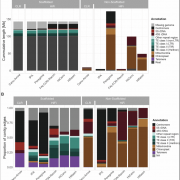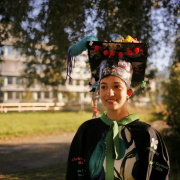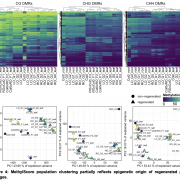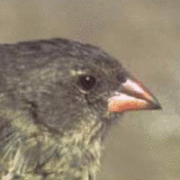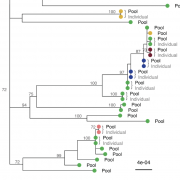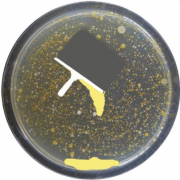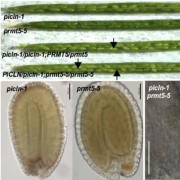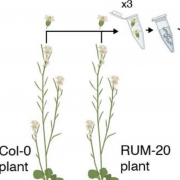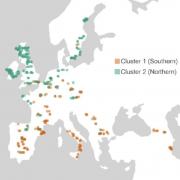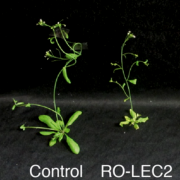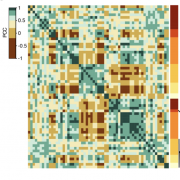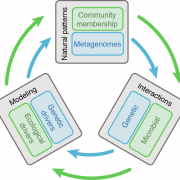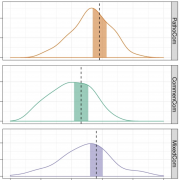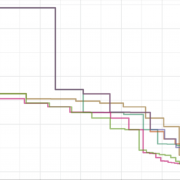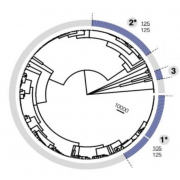Detlef spoke at Kinderuni
Covered in our local newspaper
Tübingen Children’s University
Max Planck researcher Detlef Weigel at the Children’s University: Big beak on demand
Max Planck researcher Detlef Weigel talked about dogs, finches and the four letters of life.
29.06.2022
By Ulla Steuernagel… Read the rest
bioRxiv: Analysis of herbicide resistance mutations
Use of long reads for phased analysis of extended haplotyes
Deep haplotype analyses of target-site resistance locus ACCase in blackgrass enabled by pool-based amplicon sequencing
Sonja Kersten et al. (2022) bioRxiv 496946 doi.org/10.1101/2022.06.22.496946
Rapid adaptation of weeds to herbicide applications … Read the rest
Updated bioRxiv: Sphingomonas & Pseudomonas in the phyllosphere
Sphingomonas does well ... but only when plants are alive
Contrasting patterns of microbial dominance in the Arabidopsis thaliana phyllosphere
Derek S. Lundberg et al. (2022) bioRxiv 438366 https://doi.org/10.1101/2021.04.06.438366
Sphingomonas is one of the most abundant bacterial genera in the … Read the rest
bioRxiv with Yanovsky lab: Light, temperature and alternative splicing
PICLN modulates alternative splicing and ensures adaptation to light and temperature changes in plants
Julieta L. Mateos et al. (2022) bioRxiv 496170 doi.org/10.1101/2022.06.14.496170
Plants undergo transcriptome reprogramming to adapt to daily and seasonal fluctuations in light and temperature conditions. While … Read the rest
bioRxiv with MoiLab: Improved pool-sequencing
Monitoring rapid evolution of plant populations at scale with Pool-Sequencing
Lucas Czech et al. (2022) bioRxiv 477408 doi.org/10.1101/2022.02.02.477408
The change in allele frequencies within a population over time represents a fundamental process of evolution. By monitoring allele frequencies, we can … Read the rest
bioRxiv: Drought selects on plants and also their microbiomes
Drought selection on Arabidopsis populations and their microbiomes
Talia L. Karasov (2022) bioRxiv 487684 doi.org/10.1101/2022.04.08.487684
Microbes affect plant health, stress tolerance1 and life history2. In different regions of the globe, plants are colonized by distinct pathogenic and commensal microbiomes, but … Read the rest
Prestigious HFSP Long-Term Fellowship for Gal Ofir
Gal Ofir is joining us from the lab of Rotem Sorek at the Weizmann Institute, where he has helped to discover and characterize new immunity systems that bacteria use to defend themselves against phages. Check out Gal’s impressive publication record … Read the rest
bioRxiv: Stable epimutations after regeneration
Predictable and stable epimutations induced during clonal propagation with embryonic transcription factors
Wibowo et al. (2022) bioRxiv 2022.03.15.484412
Read the Twitter thread here
Although clonal propagation is frequently used in commercial plant breeding and plant biotechnology programs because it minimizes … Read the rest
Systematic transcriptomic study of heterosis
Pervasive under-dominance in gene expression as unifying principle of biomass heterosis in Arabidopsis
Yuan et al. (2022) bioRxiv 2022.03.03.482808
Heterosis, the generally superior performance in hybrids compared to their inbred parents, is one of the most enigmatic biological phenomena. Many … Read the rest
PATHOCOM sampling underway
Under Aim 1 of our ERC-SyG project PATHOCOM, we are generating foundational data, by characterizing the intra- and interspecific diversity as well as abundance of pathobiota and commensal microbiota across multiple populations of A. thaliana in three regions in … Read the rest
Commensal Pseudomonas can protect against pathogens
Commensal Pseudomonas strains facilitate protective response against pathogens in the host plant
Or Shalev et al., Nature Ecology & Evolution (published online February 24, 2022)
The community structure in the plant-associated microbiome depends collectively on host–microbe, microbe–microbe and host–microbe–microbe interactions. … Read the rest
Assembling Arabidopsis centromeres with HiFi reads
Collaboration with Ian Henderson (Cambridge):
Pushing the limits of HiFi assemblies reveals centromere diversity between two Arabidopsis thaliana genomes
Fernando Rabanal et al. bioRxiv 480579 doi 10.1101/2022.02.15.480579 (posted February 16, 2022)
Although long-read sequencing can often enable chromosome-level reconstruction of … Read the rest
eLife: Repeated origin of gylphosate resistance in waterhemp
Repeated origins, widespread gene flow, and allelic interactions of target-site herbicide resistance mutations
Julia Kreiner et al., eLife 11:e70242 (2022). doi: 10.7554/eLife.70242
Causal mutations and their frequency in agricultural fields are well-characterized for herbicide resistance. However, we still lack understanding … Read the rest




